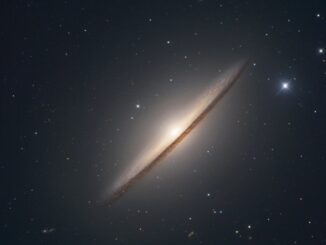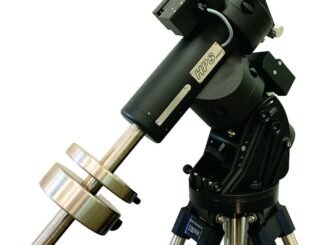
The Perseid meteor shower, the year’s most popular shooting star show, reaches its predicted maximum activity this weekend, with the Moon’s glare not such a factor this time around.
The date for the return of the highly-anticipated annual Perseid meteor shower is circled on the observing calendars of meteor enthusiasts and the spectacular show of dozens of shooting stars reigning down across mild August nights is one that has captured the imagination of the public at large.
This year, the Perseids are predicted to reach maximum intensity on 12/13 August (Saturday night into Sunday morning) at around 08h UT, favourable timing for North America in particular. From UK shores, watches in the run-up to dawn on Sunday morning are likely to yield the best crop of meteors, though it’ll be worth observing on the nights either side.
Last’s years shower was spoilt big-time by an overpowering full Moon, so you’ll be glad to hear that this time the Moon is much less intrusive, its waning crescent phase, illuminated by just 10 per cent (new Moon occurs on 16 August), giving off a dim glow.

How to observe
The Perseids are already active, so you’re likely to see Perseid meteors, along with sporadics, random meteors which occur frequently every night, on nights between now and the weekend peak. Named meteor showers have a point in the sky from where that shower’s meteors appear to arrive from. This point is called the radiant and the shower is named for the constellation in which the radiant lies, or at least is very close to (the April Lyrids radiant lies in Hercules).
The Perseid radiant lies in far north of the autumn constellation of Perseus around 4° of the magnificent Double Cluster (near magnitude +4.6 eta Persei), a location close to the boundary with Cassiopeia. This area of sky is circumpolar (never setting) from the UK, but you’ll need to wait until at least the small hours for the radiant to climb suitably high in the north-eastern sky. By 2am BST, the radiant is 50° up, high enough for the vast majority of Perseids to be spotted.
To further your chances of seeing the maximum amount of Perseids, don’t peer intently at the spot in the sky where the radiant lies, although this advice may seem counter-intuitive. Perseid meteor trails or streaks here will appear short and therefore harder to see. You will see many more shooting stars if you observe an area of sky 30-40 degrees from the radiant (from where, meteor streaks may appear longer) and around 50 degrees above the horizon.
Although the radiant is up much earlier in the evening it’s still quite close to the north-northeastern horizon. Those Perseids bursting out 20° or more below the radiant will be hard to spot or be missed entirely below the horizon.
How many Perseids?
Under a haze-free sky at a dark-sky viewing site, observers can expect to see between 50 and 70 Perseid meteors each hour near the peak. In towns or cities, observed rates may still be around ten per hour in the early-morning hours when the radiant is high. The Perseids are renowned for producing an abundance of bright meteors and fireballs that often leave lingering trails, or trails.
The Perseids, born from the orbital debris from the periodic comet 109P/Swift–Tuttle, produce swift meteors, entering the upper atmosphere at around 60km/second.




